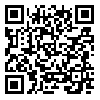Volume 15, Issue 1 (Vol.15, No.1 2019)
irje 2019, 15(1): 105-115 |
Back to browse issues page
Download citation:
BibTeX | RIS | EndNote | Medlars | ProCite | Reference Manager | RefWorks
Send citation to:



BibTeX | RIS | EndNote | Medlars | ProCite | Reference Manager | RefWorks
Send citation to:
Eybpoosh S, Eshrati B. Nosocomial Infection Surveillance System in Iran: Structures, Processes and Achievements. irje 2019; 15 (1) :105-115
URL: http://irje.tums.ac.ir/article-1-6287-en.html
URL: http://irje.tums.ac.ir/article-1-6287-en.html
1- Assistance Professor of Epidemiology, Department of Epidemiology and Biostatistics, Research Centre for Emerging and Reemerging Infectious Diseases, Pasteur Institute of Iran, Tehran, Iran , sana.eybpoosh@gmail.com
2- Center For Preventive Medicine, Department of Social Medicine, Iran University of Medical Sciences, Tehran, Iran
2- Center For Preventive Medicine, Department of Social Medicine, Iran University of Medical Sciences, Tehran, Iran
Abstract: (4615 Views)
Background and Objectives: This article provides an overview of the national nosocomial infection surveillance system in Iran and its current status, achievements, and challenges.
Methods: All relevant reports, documents, and program guidelines, as well as published literature and surveillance data related to the nosocomial infection surveillance system in Iran were critically reviewed. Opinions of the key informants at local and governmental levels were also reviewed.
Results: The program was launched in 2006 covering 100 volunteer hospitals. Since 2016, participation in the program is obligatory, leading to the participation of 555 hospitals with >100 beds (56%). Major data collected in the program include demographic characteristics, infections and related risk factors, pathogens and their antimicrobial susceptibility/resistance, and patient outcome. Recently, device-associated infection rates are also calculated in the program. Since its establishment in 2006, the program has improved in terms of case finding and coverage. Implementation of the program has also had positive impacts on the stakeholders’ knowledge, attitude, and practice.
Conclusion: Although the number of identified cases and program coverage have improved, a considerable proportion of the infected cases still remain undiagnosed. Implementation of the program has also improved the stakeholders’ awareness, attitude and practice. The program faces a number of challenges, including lack of appropriate scientific support from academics and executive issues. Integration of active and sentinel surveillance in selected hospitals, persuasion of physicians to actively participate in the program, and conducting incidence and prevalence surveys would help the program to better detect nosocomial infection cases.
Methods: All relevant reports, documents, and program guidelines, as well as published literature and surveillance data related to the nosocomial infection surveillance system in Iran were critically reviewed. Opinions of the key informants at local and governmental levels were also reviewed.
Results: The program was launched in 2006 covering 100 volunteer hospitals. Since 2016, participation in the program is obligatory, leading to the participation of 555 hospitals with >100 beds (56%). Major data collected in the program include demographic characteristics, infections and related risk factors, pathogens and their antimicrobial susceptibility/resistance, and patient outcome. Recently, device-associated infection rates are also calculated in the program. Since its establishment in 2006, the program has improved in terms of case finding and coverage. Implementation of the program has also had positive impacts on the stakeholders’ knowledge, attitude, and practice.
Conclusion: Although the number of identified cases and program coverage have improved, a considerable proportion of the infected cases still remain undiagnosed. Implementation of the program has also improved the stakeholders’ awareness, attitude and practice. The program faces a number of challenges, including lack of appropriate scientific support from academics and executive issues. Integration of active and sentinel surveillance in selected hospitals, persuasion of physicians to actively participate in the program, and conducting incidence and prevalence surveys would help the program to better detect nosocomial infection cases.
Type of Study: Research |
Subject:
Epidemiology
Received: 2019/08/5 | Accepted: 2019/08/5 | Published: 2019/08/5
Received: 2019/08/5 | Accepted: 2019/08/5 | Published: 2019/08/5
Send email to the article author
| Rights and permissions | |
 |
This work is licensed under a Creative Commons Attribution-NonCommercial 4.0 International License. |





